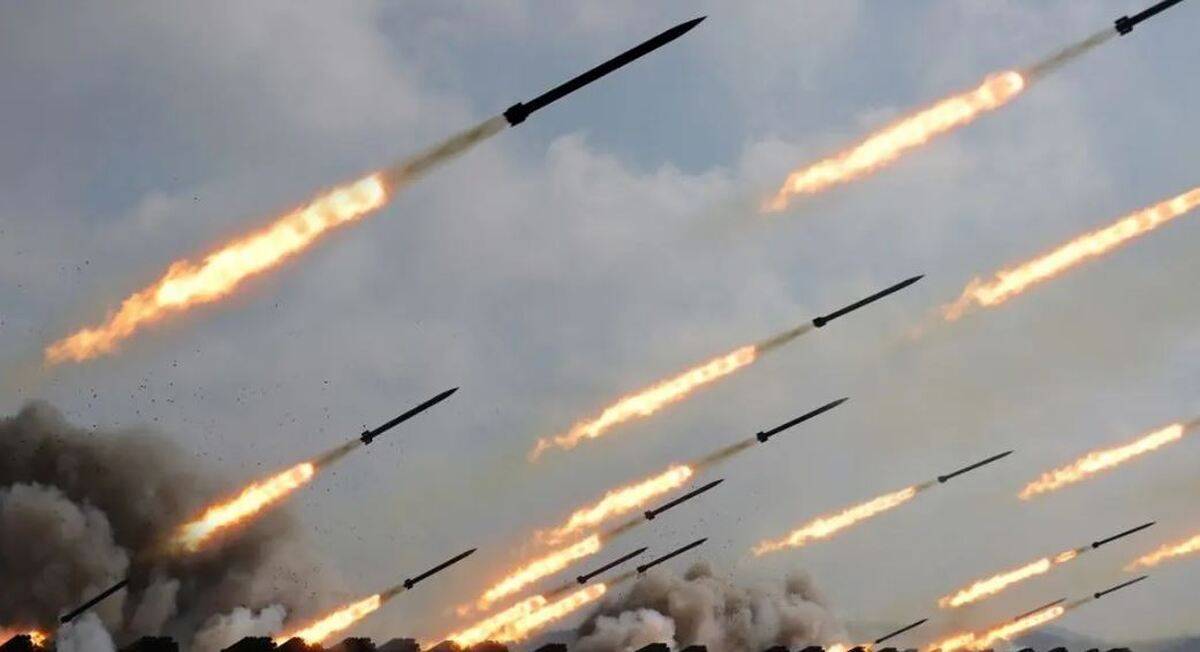2786 Views
Iran’s $100 Drones vs. Israel’s 4.5B Shekel Iron Dome: The 12-Day War That Exposed Zionist Weakness!
The recent 12-day war between Iran and the Israeli regime marks a turning point in the region’s military and security equations. This conflict not only showcased new dimensions of Iran’s military capabilities, but also exposed weaknesses in Israel’s defensive structure—particularly the expensive Iron Dome system.
What drew analysts’ attention in this confrontation was not a traditional conflict, but rather Iran’s hybrid attacks that reflected Tehran’s multi-layered, multi-domain military power, challenging the Israeli regime across several fronts: military, aerial, cyber, and electronic warfare.
Precise, Multi-Source Offensive Power
One of the most prominent features of this conflict was Iran’s precise, multi-source offensive capabilities. During this war, we witnessed the simultaneous firing of long-range and precision-guided missiles from different parts of Iran’s vast territory. In addition to Iran, its regional allies—particularly Yemen—also targeted various areas of occupied territories. This strategy created unprecedented disruption and erosion in Israel’s defense systems, including the Iron Dome and David’s Sling.
Military analysts believe the goal of these multi-faceted attacks was to saturate Israel’s defenses and sow confusion in its command and control systems. With a massive, coordinated volley of missiles from multiple directions, Israel’s radar systems faced serious challenges in identifying and intercepting every projectile. This tactic deprived Israel’s defense of vital decision-making time, allowing a significant number of missiles to penetrate and strike predetermined targets.
Reports indicate that vital infrastructure and strategic military centers deep inside Israel were hit with precision, causing considerable damage. This kind of attack undermined the traditional concept of air defense and demonstrated how even the most advanced defensive systems can be overcome through a coordinated, intelligent approach.
Massive, Smart Drone Operations
Alongside missile attacks, Iran’s massive and intelligent drone operations played a crucial role in the success of these assaults. Dozens of smart drones—especially Shahed and Mohajer models—flew at varying altitudes and speeds, presenting Israel’s defense layers with serious challenges. These drones not only served as cheap platforms for suicide or reconnaissance missions but also as decoys to drain Israel’s expensive interceptors.
Field reports and satellite imagery analyses indicate that these drones successfully penetrated Israel’s defense layers and struck sensitive military, economic, and infrastructure targets. The cost of intercepting each drone with Iron Dome missiles compared to the cost of producing a drone revealed a fundamentally asymmetric economic battle that favored Iran.
Cyber Warfare and Electronic Deception
A vital yet less visible dimension of this conflict was cyber warfare and electronic deception. Before and during the physical attacks, Iran carried out sophisticated cyberattacks on Israel’s vital infrastructure—especially its warning and command systems—causing widespread disruption. These attacks not only temporarily disabled some radar and communication systems but also injected false data and electronic deception, slowing and hampering enemy responses.
Reports speak of cyberattacks on key military and government servers, targeted phishing attacks on critical defense personnel, and malware injections into sensitive networks. These cyber operations disrupted the timely flow of accurate information among Israel’s various military units, favoring the attacking forces. In some cases, early-warning systems were flooded with false data, causing Israel to waste defensive munitions on non-existent targets.
This dimension showed that modern wars are fought not just in the physical realm but also in cyberspace and the electronic domain—and that Iran has achieved significant capabilities here as well.
Full Coordination with the Axis of Resistance
A key factor in Iran’s success in this war was its complete coordination with the Axis of Resistance. This went beyond information sharing and logistical support and became an unprecedented military synergy. Iran’s allies simultaneously set enemy fronts ablaze from multiple directions. This coordinated operation forced Israel’s defense forces to fight on multiple fronts, depriving them of the ability to focus on any single front.
For example, while Iran attacked from the east, Yemen’s Ansarullah created a southern threat to Israel with its long-range drone and missile attacks.
Efficient Indigenous Defense
While Iran achieved remarkable offensive success, its defensive capabilities also stood out in this conflict. Iran’s efficient indigenous defense, using advanced systems such as Bavar-373 and 3rd of Khordad, successfully countered Israeli counterattacks. These fully indigenous systems, with precise interception and wide regional coverage capabilities, destroyed a significant portion of the missiles and drones launched by Israel.
Reports show that Israel’s attempts to respond to Iran’s attacks were largely neutralized by Iran’s indigenous defense systems. This not only prevented serious damage to Iran’s infrastructure but also strengthened domestic and regional confidence in Iran’s defensive capabilities. These defense systems, long dismissed and mocked by Western media, proved their effectiveness in practice and showed that Iran has achieved acceptable self-sufficiency and efficiency in air defense as well.
In Conclusion
The recent 12-day war with the Israeli regime clearly demonstrated that Iran has become a multi-layered, multi-domain military power with capabilities far beyond previous perceptions. The combination of precision-guided missiles and smart drones, alongside cyber warfare and unmatched synergy with the Axis of Resistance, has given Iran an effective offensive and defensive architecture.
This war is not just a military victory for Iran and the Axis of Resistance, but also a serious warning to all regional and extra-regional actors: the era of uncontested dominance by any single power in this region is over. The region’s military future will undoubtedly be shaped by this demonstration of Iran’s multi-dimensional military power and will require a reassessment of defensive and security strategies.
*Translated by Ashraf Hemmati from the original Persian article written by Mohammad Saleh Ghorbani

Comment
Post a comment for this article